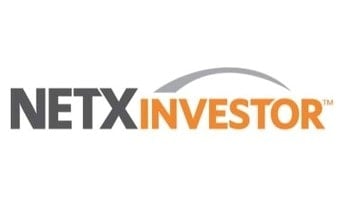Which word best describes the current state of the country to you: divided or balanced? Your answer likely depends on several factors, ranging from politics to life experiences to your penchant for optimism. Regardless, it looks like we’re on course to have a Democratic president and a split Congress.
Despite one’s personal politics, there is one area where that particular election outcome has historically been good news: the stock market. In fact, Wharton Professor of Finance Jeremy Siegel predicts that President Biden presiding over a split Congress could be “excellent” for the markets.
So after all the drama of the past year, it looks like there’s a silver lining we can all look forward to, right?
Well, maybe not so fast.
As anyone who’s been paying attention will attest to, 2020 has proven that all bets are off, and anything remotely resembling “expectations” is subject to the whims of nature, politics, and other surprises of a human nature. Yet with President-elect Biden moving back into the White House in January, one thing seems certain: There are probably a lot of changes on the horizon – tax and otherwise. With so much uncertainty, how should we respond?
Stay Flexible
If the predicted “blue wave” had come to full fruition, we would now be focusing in on the new President’s policies to analyze how you might capitalize on the upside while protecting yourself from the downside.
But that’s not what happened. And while the Biden-Harris ticket did come out on top, the Senate and House are another story. As a result, the future of Biden’s economic agenda is less certain, and any prognostications we present at this point would lean more toward the “guess” end of an “educated guess” spectrum of possibilities.
Despite this uncertainty – indeed perhaps because of it – there are things you can do to prepare for this new environment. Our number one suggestion is this: Stay flexible.
Here’s why: If your entire financial plan is built in such a way that you’re only successful if “Scenario A” happens, then you’re setting yourself up for trouble – no matter what “Scenario A” is. This is generally true, of course, but it’s especially true in our current environment.
The best financial plans – the ones most likely to help you maximize your success – aren’t designed for a specific, predetermined future. Instead they are built with flexibility in mind, so you can pivot easily, no matter which potential scenario becomes reality. Such plans are referred to as “robust,” because although they bend, they do not break.
Here are four ways to ensure you have a robust, flexible plan.
1. Maintain a Flexible Investment Strategy
Taxable portfolios don’t always get much love in the investing world, despite being one of the most flexible options out there. Why are they so often an afterthought?
It’s because of taxes, of course.
The difference between taxable portfolios and “retirement” portfolios is that the latter offer certain tax advantages, especially in the short term. It’s the government’s way of encouraging people to save for their own retirement, which benefits everybody.
But along with the tax advantages of IRAs, Roth IRAs, and 401(k) accounts come rules and restrictions, and a resulting loss of flexibility. And sometimes, when the world changes, that lack of flexibility comes back to bite in unexpected ways.
Take, for example, the Biden tax proposals to change not only marginal tax rates but also to limit the deductibility of contributions to IRAs and 401(k) accounts. Taken together, if enacted, those changes would turn traditional tax strategies that use these accounts on their head.
And it’s quite possible that someone who had maximized their tax efficiency using these accounts at the cost of all flexibility could actually be worse off than someone who had balanced the two goals.
And that’s only the beginning. Taxes aside, retirement accounts are designed to be unavailable for financial contingencies until you reach 59½ (or retire from your job, in the case of a 401(k) account).
But what happens if you truly need to use some of your long-term savings before then? Withdrawing money early from a retirement account can completely wipe out the hoped-for tax advantages and impose additional costs to boot.
And how about needing to borrow against some of your wealth for an urgent, short-term need? Retirement accounts don’t work for that, but regular investment accounts do.
The bottom line here: don’t forget to build flexibility into your long-term investment strategy.
2. Ensure Flexible Retirement Cash Flow
One of the biggest challenge most retirees face is how to turn the money they’ve saved for so many years – their long-term investments – into cash flow that will replace the regular paycheck they’re no longer receiving from work.
This is a challenge precisely because growth assets and cash are almost exact financial opposites.
- Growth assets offer fairly predictable appreciation over the long run but are wildly volatile in the short term.
- Cash, in contrast, is stable in the short term but loses value to inflation over time.
Where the two interface, their competing goals of stability and growth collide.
This is why so many retirees use annuities to “transform” growth assets into a steady stream of spendable cash in retirement. The annuity strategy “solves” the volatility problem associated with growth assets.
But beware: The much-touted “protection” from stock market volatility offered by annuities comes at a hefty price – i.e., the loss of flexibility and exposure to the growth potential of stocks.
As a result, if your retirement plan is largely comprised of annuities, you’ll be left with little or no flexibility at a time in your life when you could need extra money for unexpected medical costs or any number of other reasons. And over the years, even though your expenses will grow, your annuity payments will not. Short-term gain leads to long-term pain.
I’m not saying you should avoid annuities entirely. In fact, they can be a valuable addition to your retirement income plan. But if you don’t want to end up with far less retirement income than you could have, you’ll need to flexibly balance the properties of both asset classes.
If you’re wondering how to do this, we can help. Send your Griffin Black advisor a quick email and we’d be happy to schedule a time to talk.
3. Balance Present and Future: Estate Planning
Financial planning is largely about balancing your present and future needs while optimizing the resources you have – and could have – over your entire lifetime.
Yet it’s important to keep the difference between today and tomorrow in mind. What is happening today is. What we think will happen tomorrow only may be.
That’s not to say that we shouldn’t think about the future. Preparing for a variety of outcomes is crucial to good planning. Thinking ahead allows us to prepare for a range of possibilities. But if you’re always preparing for tomorrow, then you might not be ready for what happens today.
Take estate planning, for instance.
As we told you in our series on the Biden tax plan, the new administration would like to significantly lower the maximum amount you can give to someone free of the estate and gift tax – from the current $11.58 million to as little as $3.5 million.
In addition, his plan aims to eliminate the “step-up” in basis at death. Basis “step-up” means that the cost basis of an inherited asset is re-set to its value on the date of death of its owner. This allows the inheritor to sell the asset free of additional taxes (after the estate has paid any estate tax due), and has long been a widely accepted planning tool, regardless of net worth.
For example, under current law, if you inherited the house where your parents lived for 50 years, the IRS would allow you to “step-up” the cost basis of the house to its current value. You would then be able to sell the property for its current fair market value without paying taxes on five decades of capital appreciation.
How much should you be worried about these changes? It depends.
If both proposals become law, the changes would together impact substantially more families than the current estate tax law. With the median price of a house in the Bay Area ranging between $1.3 – $1.7 million, it doesn’t take much to imagine that many homeowners could be affected.
On the other hand, what could be hasn’t come to pass yet. What’s more, the current (and historically high) estate tax exemption of $11.18 million is already due to come back down to $5.0 million, adjusted for inflation, in 2026.
So don’t take drastic steps yet. But if you and your spouse together own more than $11 million – or are likely to do so before you die – then you should be thinking ahead about what you want to do either way.
As always, drop us a quick message if you’d like to discuss these possibilities.
4. Focus on Your Long-Term Goals. Be Flexible in the Present.
Whatever the next four years bring, it’s important to keep your long-term goals in focus. If you were saving for your children’s college during President Trump’s administration (or Obama’s or Bush’s), then you’ll want to continue doing the same under President Biden.
Even while keeping long-term goals in focus, you may find that what is most important to you is changing. Indeed, the coronavirus epidemic and subsequent economic catastrophe have many individuals re-thinking their life priorities.
Or perhaps there could be more mundane reasons for your perspective to change: your kids all entering or leaving college sometime in the next four years; a change in your job or career priorities; a move; or even a sudden inheritance or family tragedy.
As always, we’re here to talk. We can help you make sure you’re still on track for the future you want to live. Send us an email anytime, or use the contact form on our website, and we’ll set up a time to talk.
Photo by PublicDomainPictures on Pixabay



